15 Behavioral Issues With A German Shepherd (And How To Deal With Them)
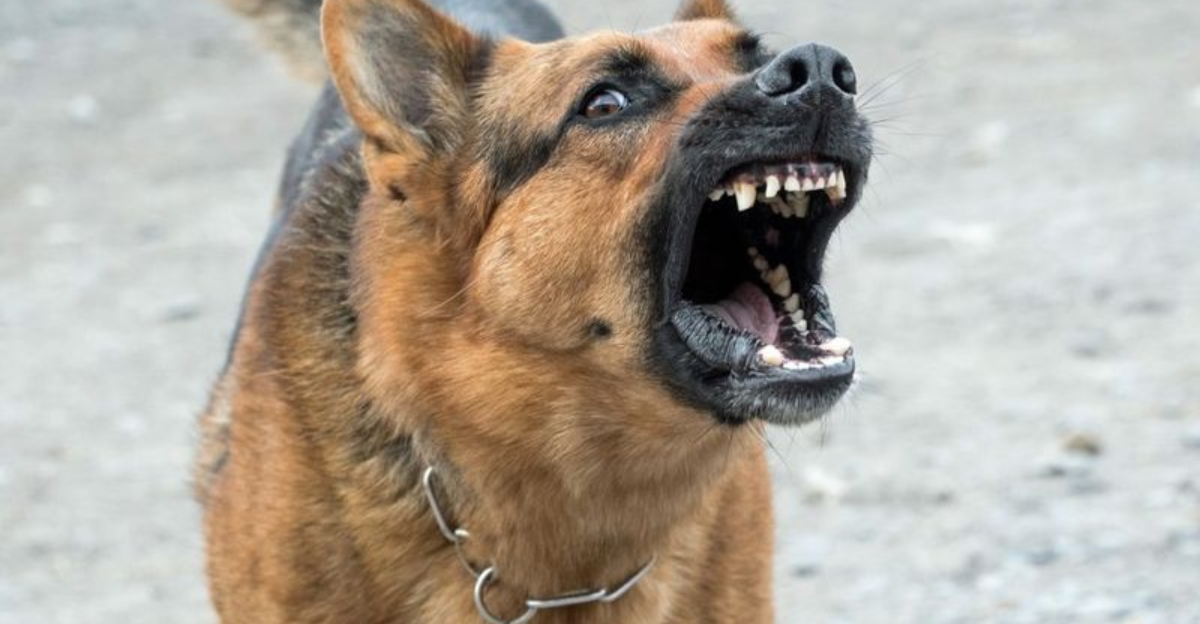
German Shepherds are intelligent, loyal companions that make wonderful family pets. However, these powerful working dogs can develop behavioral challenges that leave owners scratching their heads.
Understanding these common issues and learning effective solutions will help strengthen your bond with your German Shepherd while creating a happier home environment for everyone.
1. Excessive Barking That Never Stops

Your once-quiet companion now sounds the alarm at everything from delivery trucks to falling leaves. This territorial instinct stems from their protective nature, but unchecked barking creates neighborhood tension.
Channel this energy constructively by teaching the ‘quiet’ command. Reward silence, not noise. Provide mental stimulation through puzzle toys and regular training sessions to prevent boredom-related barking.
2. Destructive Chewing Habits
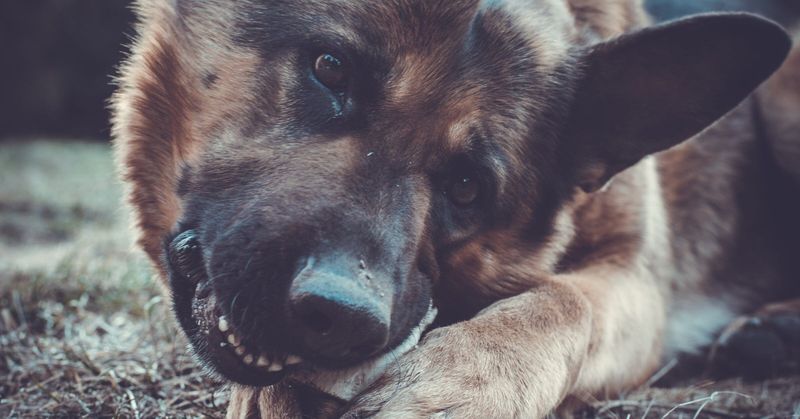
Finding your favorite shoes in tatters? German Shepherds have powerful jaws and a natural urge to chew. This behavior often signals boredom, anxiety, or excess energy rather than spite.
Supply appropriate chew toys of varying textures. Bitter apple spray deters furniture chewing. Exercise your shepherd thoroughly—a tired dog rarely redecorates your living room. Crate training provides safety during alone time while protecting your belongings.
3. Pulling Hard On The Leash
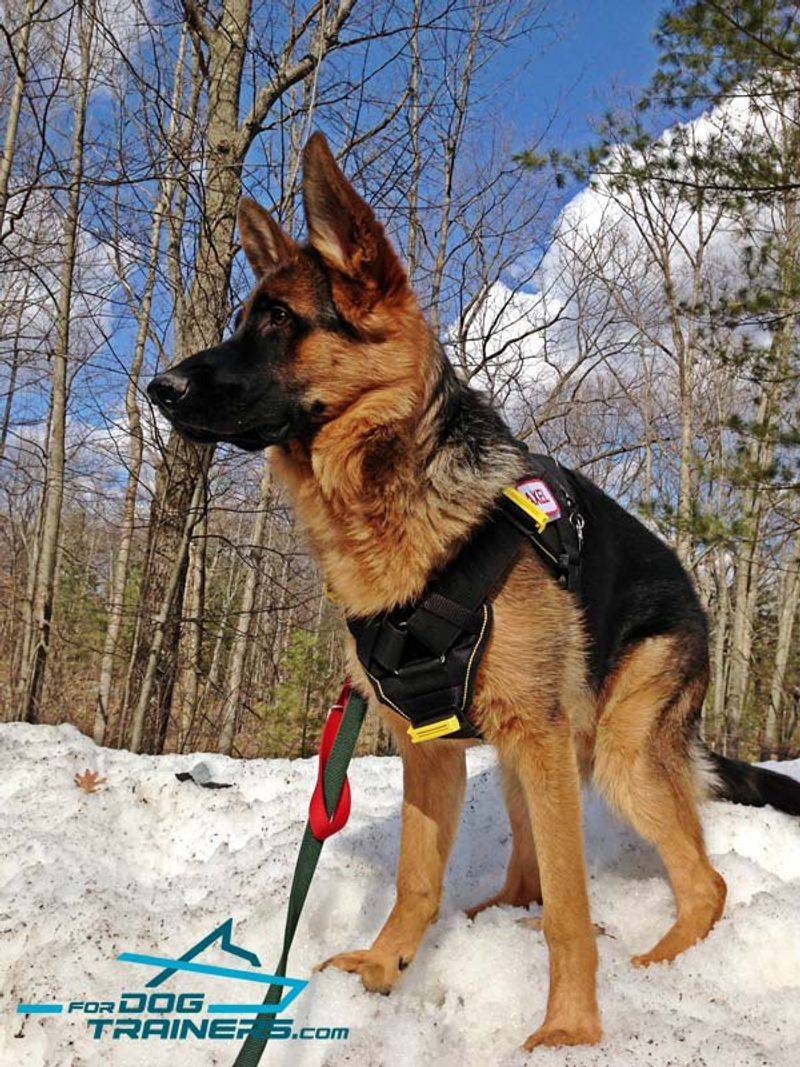
Morning walks feeling more like waterskiing sessions? German Shepherds naturally want to lead the pack, making leash pulling a common frustration. Their strength makes this especially challenging for many owners.
Start with proper equipment—a front-clip harness reduces pulling power. Practice the ‘stop and stand’ technique: when pulling starts, become immovable. Resume walking only when tension releases. Consistent training teaches your shepherd that pulling achieves nothing while loose leash walking earns forward progress.
4. Separation Anxiety Meltdowns
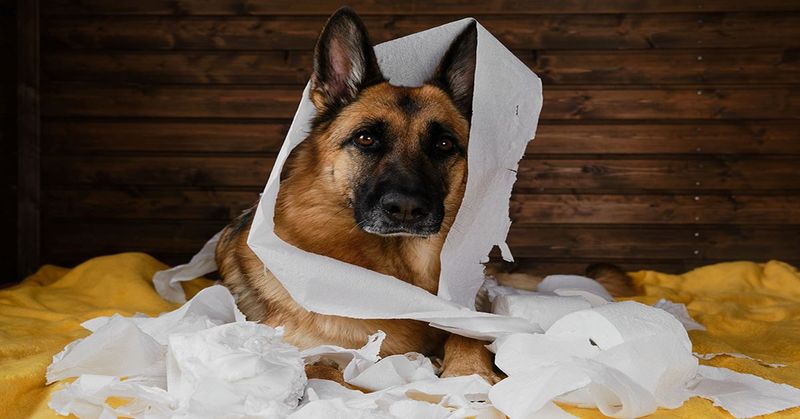
Howling, destructive behavior, and accidents happen minutes after you leave. German Shepherds form intense bonds with their families, making separation particularly stressful for these loyal companions.
Build independence gradually through practice departures. Create positive associations with your leaving routine using special treats. A consistent schedule helps your shepherd predict your return. For severe cases, speak with your vet about calming supplements or medication while working on behavioral training.
5. Fearful Aggression Toward Strangers
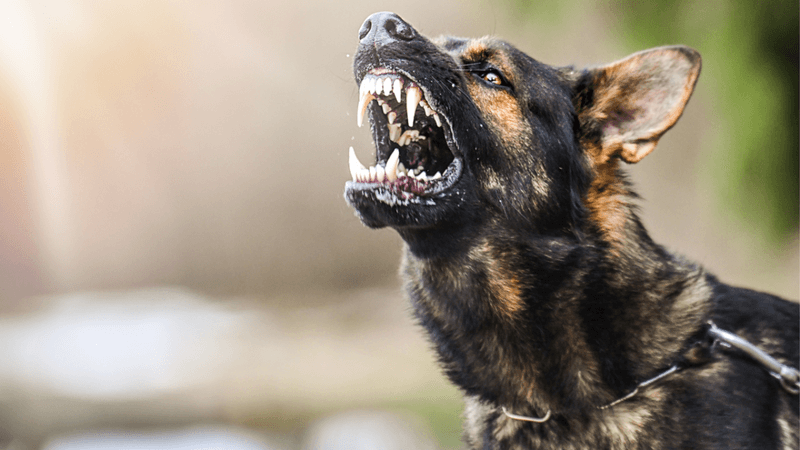
Growling at the mailman or barking at visitors isn’t just embarrassing—it signals fear-based aggression. German Shepherds naturally protect their territory, but proper socialization prevents fear responses.
Never punish growling—it’s a warning sign. Instead, create positive associations with strangers using treats and praise. Controlled introductions in neutral territory help build confidence. A professional trainer specializing in reactive dogs can develop a custom counter-conditioning program for severe cases.
6. Resource Guarding Food And Toys

Stiffening, growling, or snapping when you approach their food bowl or favorite toy indicates resource guarding. This protective behavior stems from instinct but can escalate dangerously if ignored.
Build trust by adding treats to the food bowl while your shepherd eats. Practice the ‘trade up’ game—offering something better in exchange for a guarded item. Teach reliable ‘drop it’ and ‘leave it’ commands. Multiple feeding stations reduce competition in multi-dog households.
7. Hyperactivity That Won’t Quit
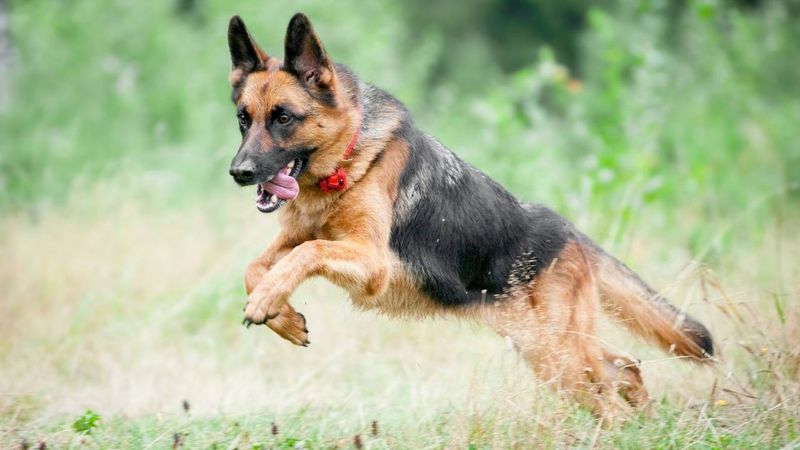
Zoomies at midnight and endless energy can leave owners exhausted. German Shepherds were bred as working dogs with tremendous stamina—apartment living rarely provides sufficient outlets for their natural energy levels.
Physical exercise alone isn’t enough. Combine daily runs or fetch sessions with mental challenges like scent work or agility training. Establish a consistent routine with designated quiet times. Teaching a reliable ‘settle’ command helps your shepherd understand when energy expression is appropriate.
8. Inappropriate Herding Behaviors

Nipping at children’s heels or circling elderly family members might seem bizarre, but it’s actually herding instinct in action. German Shepherds were developed to control livestock movement—sometimes these instincts redirect toward family members.
Redirect this behavior toward appropriate games like frisbee or ball chasing. Teach alternative behaviors that satisfy the instinct to control movement. Clear boundaries with children help prevent accidental nips during play. Consistent correction paired with positive reinforcement for calm behavior creates lasting change.
9. Excessive Shedding Everywhere
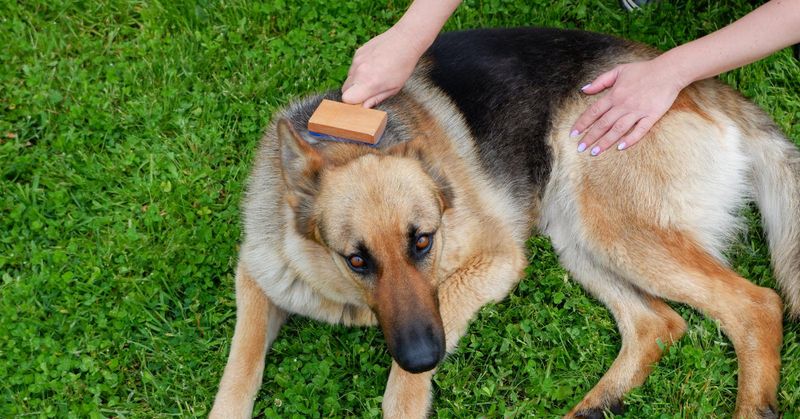
While not strictly behavioral, the infamous ‘German Shedder’ nickname exists for good reason. Frustration with fur can strain the human-canine relationship when owners feel constantly overwhelmed by grooming demands.
Establish a regular brushing routine—daily during seasonal blowouts. Proper nutrition with omega fatty acids supports healthy coat condition. Professional deshedding treatments help manage seasonal changes. Indoor/outdoor vacuums designed for pet hair make maintenance more manageable, reducing frustration for everyone.
10. Jumping On People Excitedly

Your enthusiastic shepherd launches like a furry missile whenever guests arrive. This overwhelming greeting stems from excitement rather than dominance, but can frighten visitors and even cause injuries with larger dogs.
Teach an incompatible behavior—sitting for greetings earns attention while jumping receives none. Practice with willing friends who follow your training protocol. A leash drag in the house provides control during greeting situations. Consistency across all family members ensures clear boundaries your shepherd can understand.
11. Digging Holes In The Yard
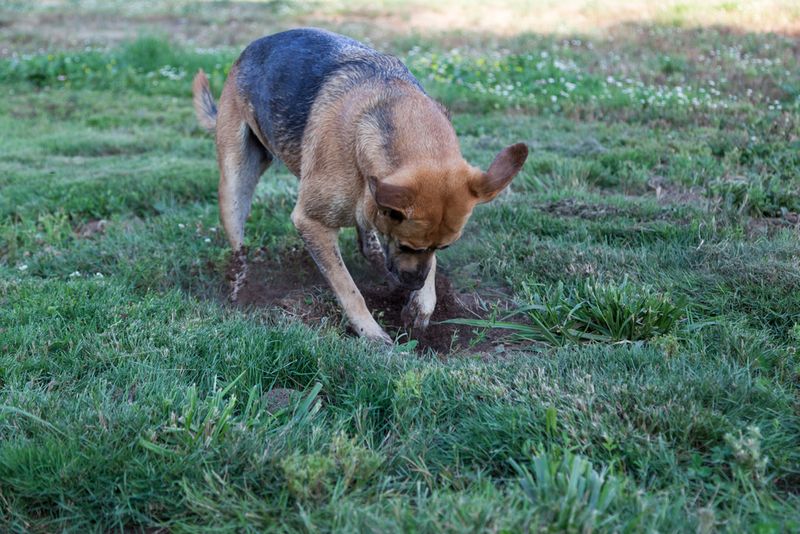
Your once-pristine lawn now resembles a lunar landscape thanks to your shepherd’s excavation projects. Digging satisfies natural instincts to den, cool off, or simply alleviate boredom.
Create a designated digging zone with buried treasures to find. Increase physical exercise and mental stimulation to reduce boredom-based digging. Supervise outdoor time during training phases. For persistent diggers, consider adding a sandbox area specifically for this natural behavior rather than fighting the instinct entirely.
12. Stubborn Refusal To Follow Commands
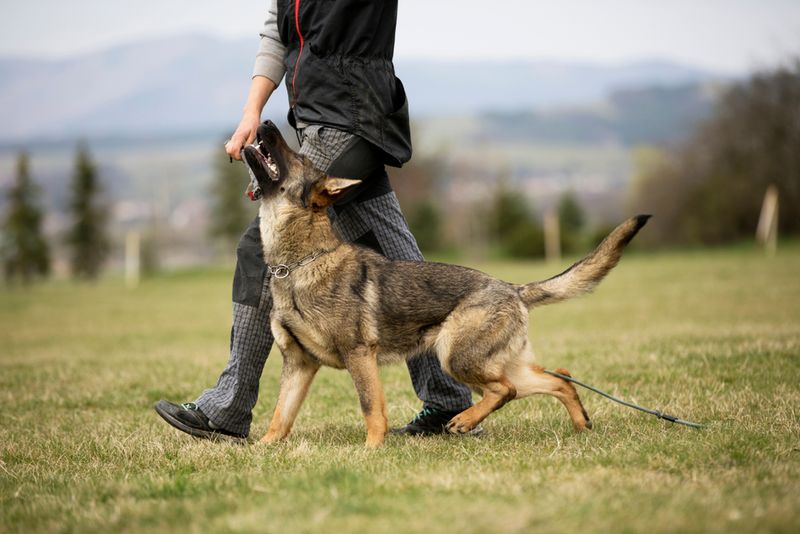
Your shepherd suddenly develops selective hearing, especially during critical moments. This isn’t defiance—German Shepherds are independent thinkers who need compelling reasons to comply with requests.
Revisit basic training using high-value rewards that motivate your specific dog. Keep sessions short and engaging rather than repetitive. Proof commands in increasingly distracting environments gradually. Remember that inconsistent enforcement teaches your shepherd that commands are optional rather than requirements.
13. Counter Surfing And Food Stealing
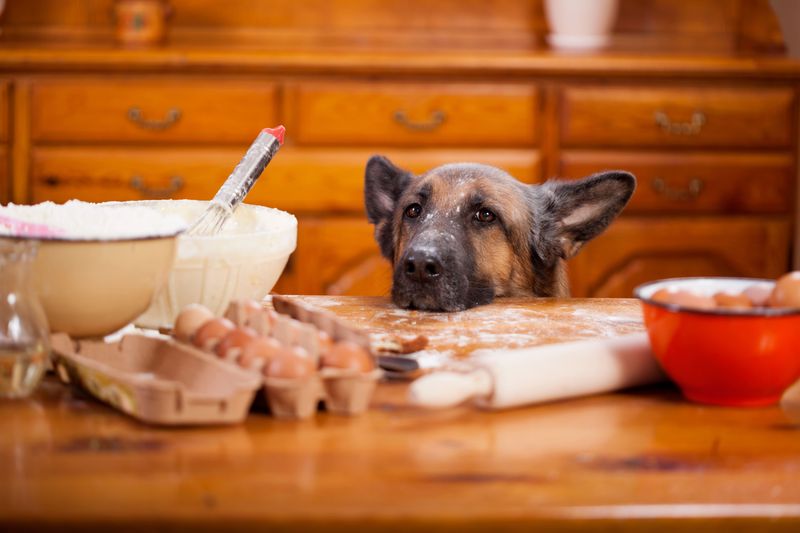
Your shepherd’s height and intelligence make kitchen counters accessible buffets. One momentary distraction results in vanished dinner ingredients and a satisfied-looking dog.
Management comes first—keep counters clear and use baby gates to restrict kitchen access when unsupervised. Teach reliable ‘leave it’ commands with progressive temptations. Create positive associations with staying out of the kitchen during meal preparation. Consistent consequences for counter visits eventually extinguish the self-rewarding behavior.
14. Excessive Mouthing And Nipping

Playful interactions quickly turn painful when your shepherd uses those sharp teeth during games. This common behavior stems from puppyhood play patterns that weren’t properly redirected.
Immediately end play when teeth touch skin—even gently. Provide appropriate chew toys as alternatives. Teach bite inhibition through consistent feedback. Avoid rough wrestling games that encourage mouthing behaviors. With adolescent dogs, this might indicate teething discomfort requiring appropriate chewing outlets.
15. Car Chasing Dangerous Behavior
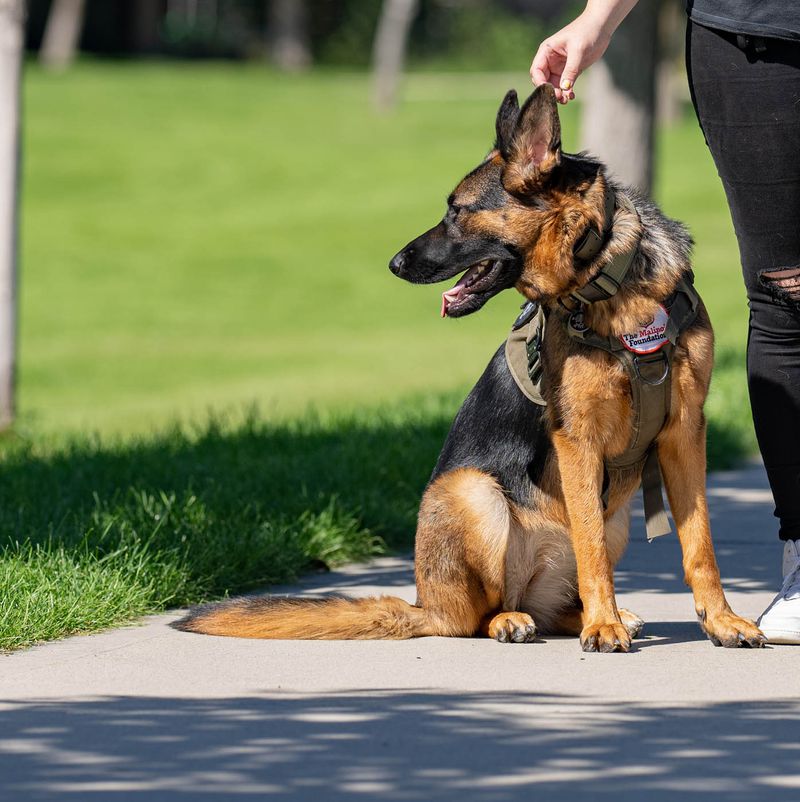
Your shepherd lunges toward moving vehicles during walks, triggering their prey drive in potentially deadly ways. This instinctive behavior targets movement rather than specific objects.
Never walk a reactive dog without proper equipment—a secure harness and short leash provide control. Create distance from triggers while retraining responses. Teach a reliable ‘watch me’ command that redirects attention. Professional help is essential for this dangerous behavior—trainers specializing in reactivity can develop a customized desensitization program.






